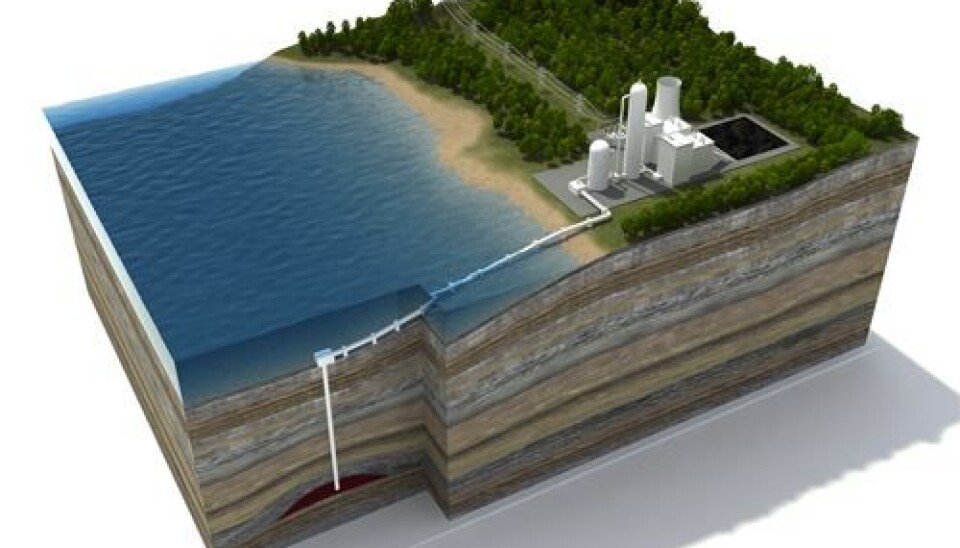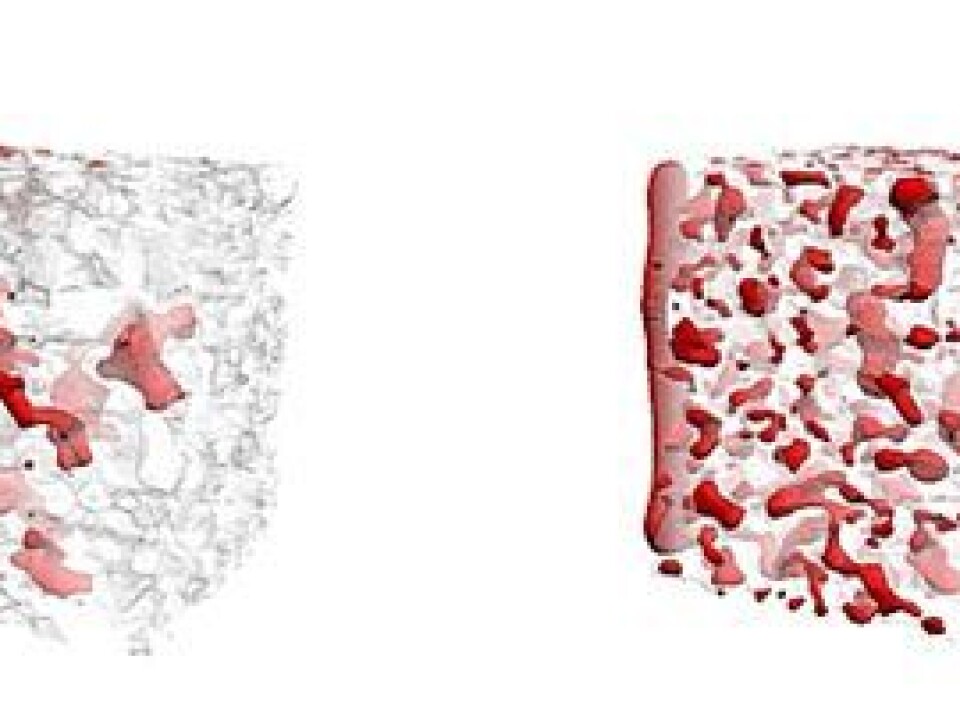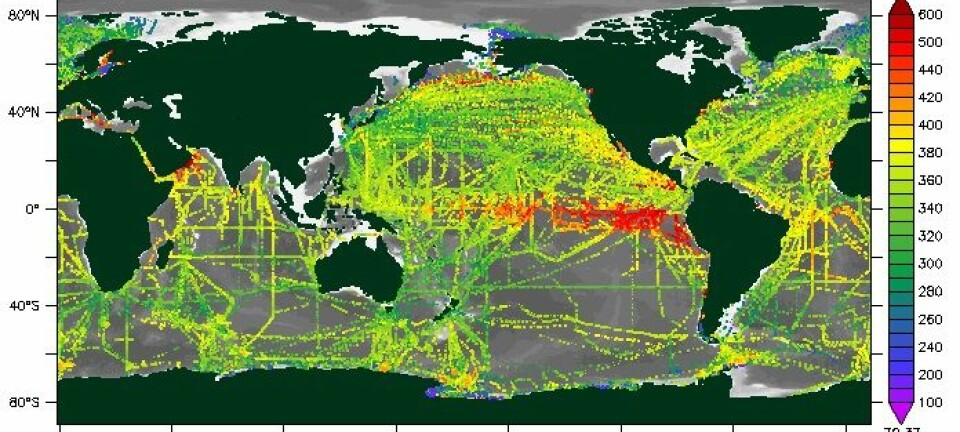This article was produced and financed by The Research Council of Norway

Simulating secure CO2 storage
The race is on to develop the most secure solution for storing CO2 in the earth’s crust. A new method studies precisely how this greenhouse gas is bound inside rocks.
Denne artikkelen er over ti år gammel og kan inneholde utdatert informasjon.
CO2 capture and storage is a key measure for mitigating climate change. The gas can be pumped into the earth’s crust and deposited in various types of porous rock that is currently saturated with seawater.
But how secure against leakage is this practice, and what is the holding capacity of different kinds of rock?
The Norwegian company Numerical Rocks AS has been studying how carbon dioxide moves and becomes “locked inside” the microstructure of sandstone and other rock.
Sealed in by capillary forces
Using computer simulations of two-phase flow (CO2 and water) incorporated directly into three-dimensional images of reservoir rock, researchers and petroleum operators can calculate how gases and fluids either move or get trapped by capillary forces in the tiny hollow spaces (called capillaries) within a porous rock.

The method itself is simple enough, but the data algorithms behind it are extremely complex and require high-performance computational power, explain Thomas Ramstad and Håkon Rueslåtten of Numerical Rocks.
Studying flow in reservoir rock
“We calculate reservoir parameters based on a slow, continuous flow of water and CO2 within the pore system of the rock – and we represent this on a digital, three-dimensional image of the rock,” says Senior Research Scientist Ramstad.
“The result is an animated 3D simulation of fluids within the rock, which enhances researchers’ physical understanding of how these substances behave.”
Stationary flow refers to the snail-paced movement of substances, typically just 30 cm per day, which takes place far from the injection well. This flow is controlled by capillary pressure conditions. The CO2 trapped in a rock’s pores by capillary force does not leak out, even if the impermeable rock types above it crack open.
Numerical Rocks is now studying flow under non-stationary conditions – in the immediate vicinity of the injection wells – where the pressure is variable and flow occurs much more quickly.
Useful for petroleum sector
Numerical Rocks is certain that the need for this kind of simulation service will grow.
“Demand will increase as CO2 storage becomes more common,” asserts Håkon Rueslåtten. “There is no doubt this will become a core activity of many major petroleum players.”
The research has received public funding under the Norwegian RD&D CCS programme (CLIMIT), which is administered by the state enterprise Gassnova and the Research Council of Norway.
Translated by: Darren McKellep/Carol B. Eckmann

































